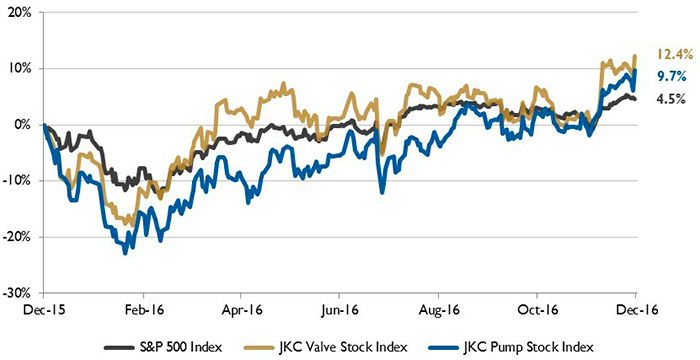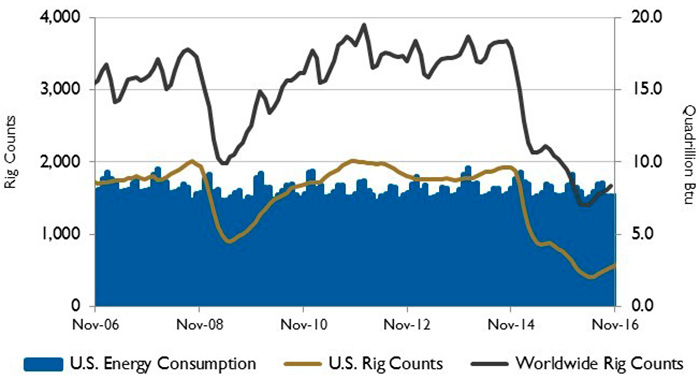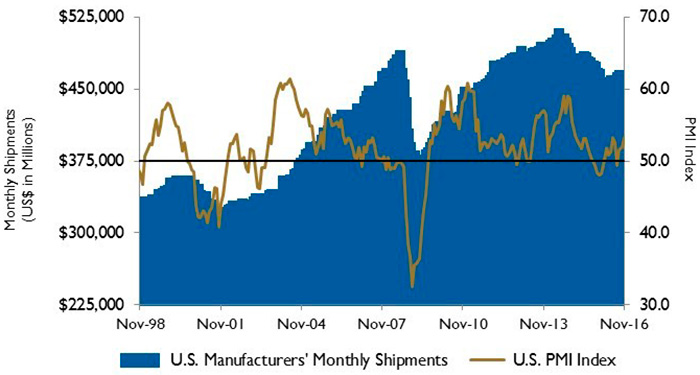The Jordan, Knauff & Company (JKC) Valve Stock Index was up 12.4 percent over the last 12 months, while the broader S&P 500 Index was up 4.5 percent. The JKC Pump Stock Index increased 9.7 percent for the same time period.1 The Institute for Supply Management’s Purchasing Managers’ Index (PMI) increased to 53.2 percent in November, up 1.3 percentage points from October, growing for the third straight month. The Production Index rose 1.4 percentage points to 56, the highest level since January 2015. The New Orders Index improved to 53 percent from 52.1 percent in October Survey respondents were positive, with a plastics and rubber product manufacturer noting, “We are foregoing our shutdown over Christmas break due to an increase in customer orders.” Another manufacturer wrote, “Business conditions are good.”
 Figure 1. Stock indices from Dec. 1, 2015, to Nov. 30, 2016 Source: Capital IQ and JKC research. Local currency converted to USD using historical spot rates. The JKC Pump and Valve Stock Indices include a select list of publicly traded companies involved in the pump and valve industries weighted by market capitalization.
Figure 1. Stock indices from Dec. 1, 2015, to Nov. 30, 2016 Source: Capital IQ and JKC research. Local currency converted to USD using historical spot rates. The JKC Pump and Valve Stock Indices include a select list of publicly traded companies involved in the pump and valve industries weighted by market capitalization. Figure 2. U.S. energy consumption and rig counts. Source: U.S. Energy Information Administration and Baker Hughes Inc.
Figure 2. U.S. energy consumption and rig counts. Source: U.S. Energy Information Administration and Baker Hughes Inc. Figure 3. U.S. PMI and manufacturing shipments Source: Institute for Supply Management Manufacturing Report on Business and U.S. Census Bureau
Figure 3. U.S. PMI and manufacturing shipments Source: Institute for Supply Management Manufacturing Report on Business and U.S. Census Bureau - The S&P Return figures are provided by Capital IQ.

